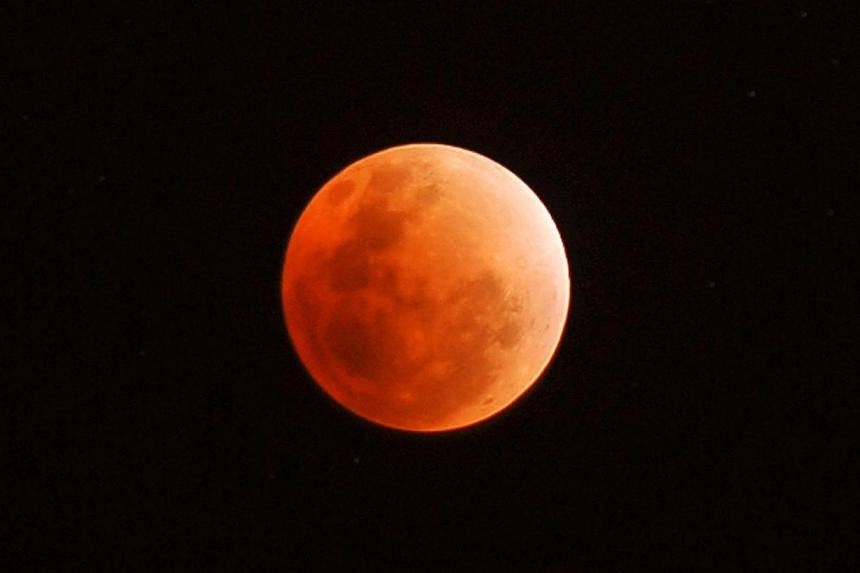This article was first published on Oct 8, 2014 and updated on Sept 28, 2015
SINGAPORE - Sky-watchers around the world were in for a treat, as the ultra-rare double spectacle of a swollen "supermoon" bathed in the blood-red light of a total eclipse manifested itself for the first time in three decades on Monday (Sept 28) morning (Singapore time).
Unfortunately, the celestial show was not visible from Singapore, although those in the Americas, Europe, Africa, west Asia and the east Pacific could revel in the hour-long event.
The last such "supermoon" occurred in 1982, and the next is not expected to take place till 2033.
Here are some interesting facts about this once-in-a-red-moon occurrence:
What is a blood moon?
When the Sun, Earth and Moon are aligned, a total lunar eclipse occurs and sees the Moon passing close to the centre of the Earth's inner shadow - the umbra. The filtering and refracting effect of Earth's atmosphere creates a blush on the face of the Moon, giving it a reddish hue.
Why is it significant?
Not only is this eclipse one of the most striking astronomical events visible from Earth, the blood moon can also be seen by the naked eye and does not require telescopes.
What's the difference between lunar and solar eclipses?
For a solar eclipse to occur, the Moon must come between the Earth and Sun; for a lunar eclipse to happen, the Earth must come between the Sun and Moon.
In all instances, all three bodies must be nearly in a straight line.
In total solar eclipses, the Sun is darkened save for some wisps of light around its corona - as though a hairy sackcloth was held up in front of it. It is also termed a "sackcloth sun".
In total lunar eclipses, the Moon is not completely darkened. Depending on the weather, the Earth's atmosphere filters out blue rays, and what results is the Moon looking faintly dull orange or red. Hence the term, "blood moon".
What are some noteworthy lunar eclipse dates?
The longest blood moon took place on July 23, 1888, and lasted one hour and 46 minutes.
The year 2011 marked the longest total lunar eclipse in a decade, lasting one hour and 35 minutes.
The shortest one is projected to occur on Nov 9, 2068, and is estimated to last just 18 minutes.
How often does a blood moon tetrad happen?
Blood moons are rare occurrences, and tonight's one is even more so because it is the last in a set of four eclipses - what astronomers call a tetrad.
Tetrads are so uncommon, that there was reportedly no tetrad for 300 years, between 1600 and 1900.
The first and second blood moons occurred on April 15 and Oct 8 last year, with the third taking place on April 4 earlier this year.
The next tetrad is predicted for 2032-2033.
Interestingly, the ongoing 2014-2015 tetrad falls in the Hebrew year 5775 - which runs from September 2014 through September 2015 - and will supposedly fall exactly on four major Hebrew festivals.
Recent blood moon occurrences in Singapore
In 2007, Singapore caught only the tail end of a blood moon, although people from places such as the United States, South America and Australia witnessed it in its full glory.
In 2011, some 700 people gathered at the Singapore Science Centre to watch the eclipse, but overcast skies resulted in a failed sighting.
In April 2014, the first eclipse in the current 2014-2015 tetrad took place, but it was not visible in Singapore. Although the moon during this eclipse had an unusual tinge, this was said to be attributed to atmospheric effects, dust or particles.
Last October, some 200 people gathered for the observation event of the second eclipse but were left disappointed when haze obscured the event.
The third eclipse at 8pm on April 4 this year was also visible in Singapore but was partially obscured by rain in the evening. The peak of the eclipse lasted just five minutes, making it the shortest lunar eclipse of the century.


